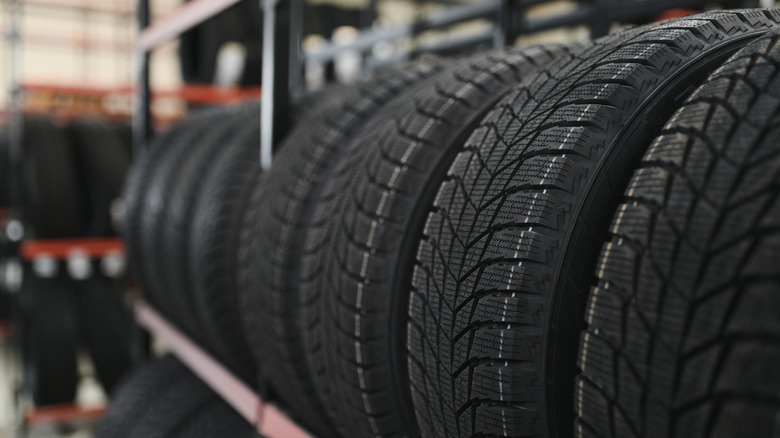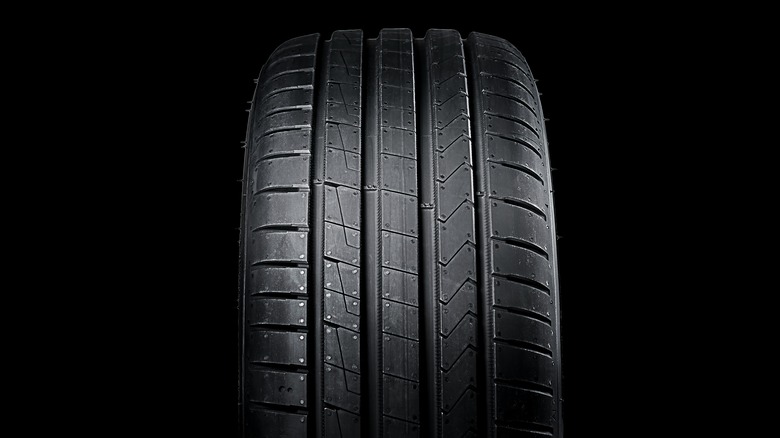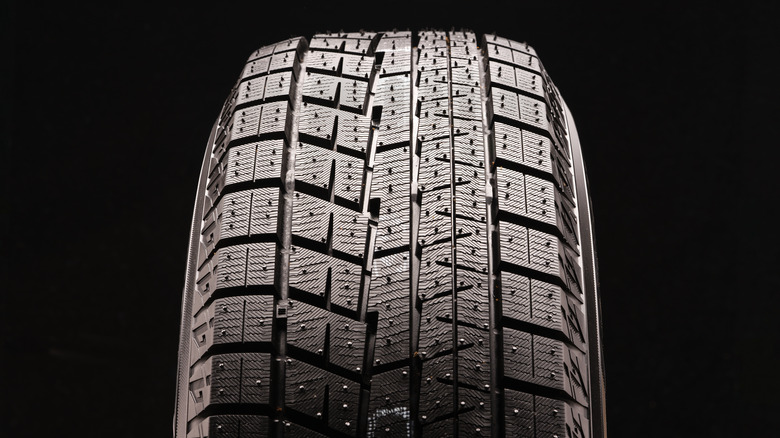
To get the most miles out of your tires, you should know what kind of tires your car comes equipped with. Sure, every tire comes with rubber tread, but not every tire features the same pattern or design in its tread. The three main types of patterns found on tires are symmetrical, asymmetrical, and unidirectional, all of which is designed for a different purpose.
Symmetrical tires are found on most passenger cars and are designed for a versatile range of applications. They offer good directional stability
for a vehicle, which helps maintain the intended direction of travel despite any minor disturbances on the road. Drivers looking for adventure may prefer unidirectional tire treads for their performance in snow and rain. Finally, asymmetrical tires are designed with performance in mind and are capable of handling a wider variety of driving conditions.
Before we get into the details of each pattern, let's talk about the four parts that make up the tire tread. They'll show up more than once throughout this article, and it's important to understand the differences if you're thinking of making a switch.
Read more: These Cars Have The Best Wings Ever
Parts Of A Tire

Tire treads consist of ribs, tread blocks, grooves, and sipes. Ribs are raised sections of the tread that provide traction in the middle of the tire. Tread blocks are found throughout the tire and are designed to further increase traction while also improving stability, acceleration, and braking. The grooves are the lines between the ribs that run the circumference of the tire that help remove moisture while keeping the tread blocks flexible. Sipes are little slits found on tread blocks and ribs that improve traction and moisture removal.
The ribs on symmetrical tire tread have the same pattern on either side. With nice, wide tread blocks, the symmetrical tire pattern offers a smooth ride with minimal noise, good grip, and optimized fuel efficiency. The symmetrical tire pattern is ideal for everyday driving, but isn't designed for high-performance applications. With fewer sipes, they have less resistance to wet conditions and hydroplaning than asymmetrical or unidirectional tires. However, tires with a symmetrical pattern can be rotated in any direction to help your tires wear out more evenly, so that's a plus.
Asymmetrical Tires Vs Unidirectional Tires

Unidirectional tires are easily identifiable because they are designed with an arrowlike pattern that points in the direction of travel. Unidirectional tires are designed for high-speed driving, but also excel in handling wet or dry road conditions. Unidirectional tires feature tread blocks and sipes that remove water more effectively than symmetrical tires. However, directional tires can only be rotated front-to-back -- they can't switch sides.
Asymmetrical tires feature a distinct pattern on the inner and outer halves of the tire tread ribs. Often featuring larger ribs and tread blocks, these tires typically offer improved handling and cornering stability. The shape of the tread blocks and the many sipes offer a good grip for driving in wet conditions and make them less prone to hydroplaning. Some asymmetric tires are like directional tires in that they are specifically designed for either the right or left side of the car, although others can be switched during a tire rotation as long as the outer sidewall is positioned correctly.
Are they giving you the performance you want? Even though symmetrical tread patterns are usually the default, you can always opt for directional or asymmetrical tires if you're looking for improved control and performance in a variety of driving conditions -- just make sure you don't mix and match them.
Want more like this? Join the Jalopnik newsletter to get the latest auto news sent straight to your inbox...
Read the original article on Jalopnik.










